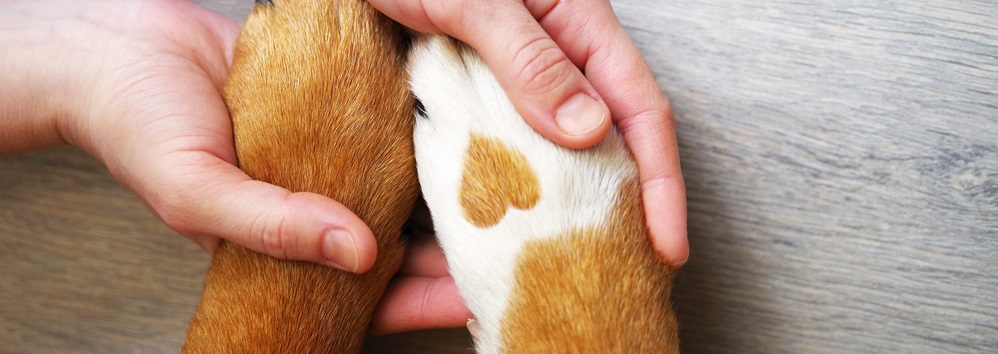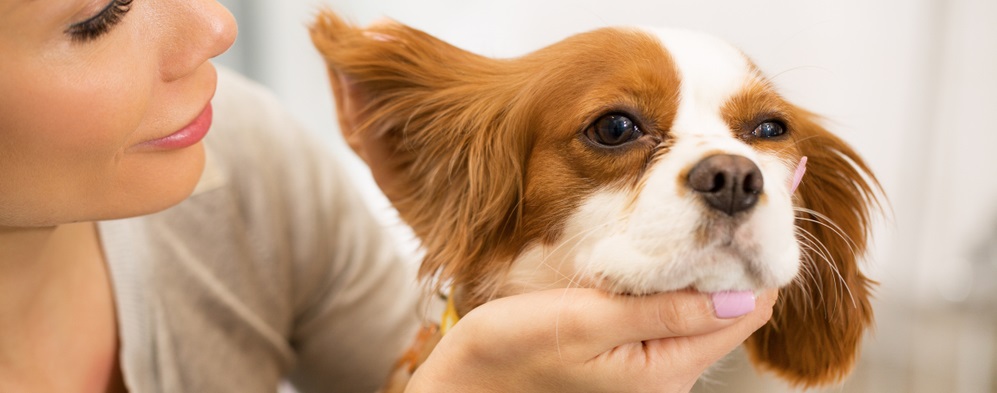Our primary job as a pet owner is to keep our furry friends happy and healthy—tails wagging and claws away. While there’s no such thing as a good injury, minor lacerations are among the easiest traumas to treat.
First, to differentiate a cut from another type of wound, a typical cut is:
- Linear and anywhere from a millimeter to several inches long
- Usually a result of a sharp object such as metal, thorny plants, or wooden splinters
- May or may not be bleeding depending on the depth—both are normal
Keep reading for basic wound care instructions and how to determine if this particular cut requires the expertise of a veterinarian.
Stop The Bleeding
You won’t be able to see very clearly until you’ve got the bleeding under control. The best approach to slowing the bleeding will depend on which part of the body was injured.
Paws
This is the most common site of cuts in animals. Maybe your pup just had to catch that squirrel, or your tabby underestimated their jump and landed in the bramble bush. Regardless of the reason behind their misadventure, here’s how to stop their bleeding:

- Check for foreign objects, such as glass or metal. You’ll often find the culprits are still embedded in the injury.
- Use your fingers or a pair of tweezers to remove them.
- Run their foot under warm tap water or swish it around in a bucket of water to dislodge any smaller particles.
- Wrap the foot in gauze or hold a small towel against the paw for five to ten minutes.
Legs
Animals’ legs contain many large arteries that produce a significant amount of blood if cut. If these are damaged, you likely won’t be able to stop the bleeding completely, but you can take these steps to slow it significantly before taking them to the vet:
- Wrap the leg in a clean towel and apply constant pressure.
- Roll them onto their back with their leg above the heart.
- Cover the wound with a second towel if the first one becomes soaked through. Removing the cloth to replace it can worsen the bleeding by detaching clots.
If the cut is minor in comparison, you should follow the same steps outlined for paws.
Torso
Animals are usually very protective of their torsos—they won’t let just anyone go in for the belly rub. If it’s too challenging to hold a cloth in place, secure the towel by wrapping the body several times with an adhesive tape. Wrap it loosely to avoid impeding their breathing.
Ears
Injuries to the ears, and face in general, are usually sustained by particularly adventurous or curious dogs, who love to crawl through the underbrush. The low-hanging branches and prickle bushes can catch on their ears and cut them.
Ears will often bleed a lot because of how many blood vessels are near the skin’s surface.
Here’s how to stop it:
- Restrict movement – Animals tend to wiggle around a lot, especially if you’re attempting to prod at their injury. But moving and shaking their heads will worsen the bleeding. Hold them as still as possible without obstructing their airways.
- Apply pressure – Hold a towel or gauze pad on either side of the ear flap. Fold the ear down and bandage it against the side of your animal’s head.
When To Take Your Pet To The Vet
If you’re unable to stop your pet’s bleeding, you should immediately bring them to the veterinarian. If you are able to stop it and can now get a better look, here are some other indications that you should seek medical help:
- The cut spans more than an inch in length.
- You can see exposed muscle, bone, or organs.
- It’s on the chest or torso, even if it appears to be superficial.
- There are uneven edges or an otherwise abnormal shape.
Caring For Your Pet From Home
If you decide to deal with their minor cut or scrape at home, here are some simple steps to safely treat your pet’s wound:
- Calmly secure the animal – Use a soft muzzle to prevent your animal from biting you while you tend to their injury. If you don’t have one, you can create a temporary version for your dog by tying a scarf or strap around the base of their snout, under their chin, and behind their ears.
- Sanitize the cut – Use a gentle, pet-safe cleansing spray to sterilize the wound and surrounding area. If you don’t have one, use warm tap water. Do not substitute for hydrogen peroxide or rubbing alcohol, as these can have damaging effects on your pet’s skin and tissue.
- Apply an antibacterial hydrogel – This step is optional, but a cooling antimicrobial gel will promote healing, decrease the risk of infection, and provide pain relief to your animal. It also works to keep wound dressings moist.
- Wrap in a bandage – Use a gauze pad or dressing to protect the cut from infection. The method will depend on the area of the body and size of the wound. Adhere to the same guidelines listed above for stopping the bleeding.
Preparing For Cuts and More
Animals are naturally prone to cuts, nicks, scrapes, and often more significant lacerations. It would be a miracle if your pet never got into any trouble—now and again, even the most well-behaved animals stick their nose where it shouldn’t be.
If you equip yourself with the right information and a fully-stocked animal first aid kit, you’ll be fixing your pet up faster than you can say, “Who’s a good boy?”
Sources:
- Lort Smith. Lacerations Cuts — Dogs. https://www.lortsmith.com/need-help-now/dog/injury-trauma/lacerations-cuts-in-dogs/
- VCA Hospitals. First Aid for Bleeding in Dogs.
- https://vcahospitals.com/know-your-pet/first-aid-for-bleeding-in-dogs
- First Aid for Pets. How to make a safe makeshift muzzle for your dog. https://firstaidforpets.net/guide-muzzle-your-dog/
